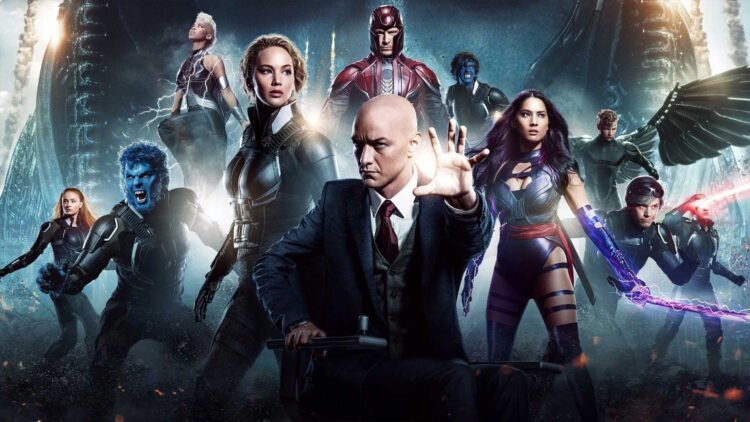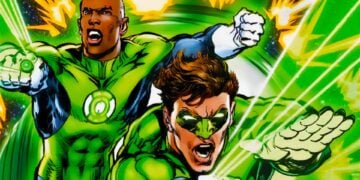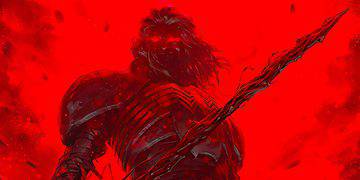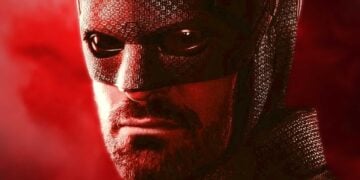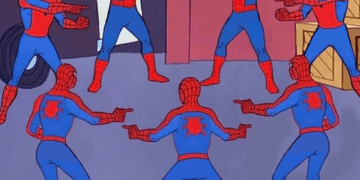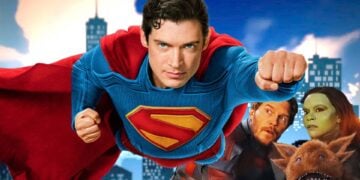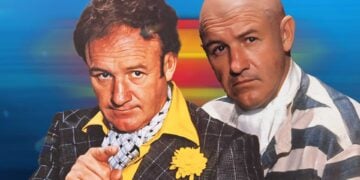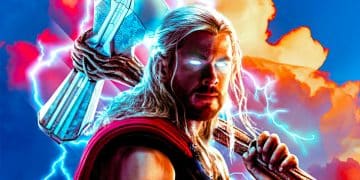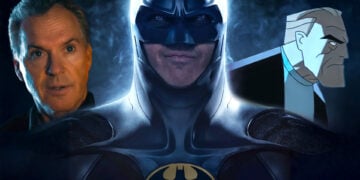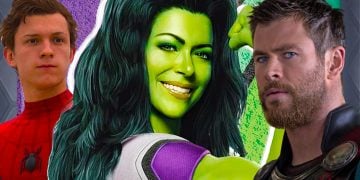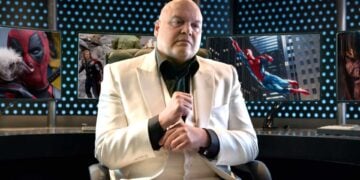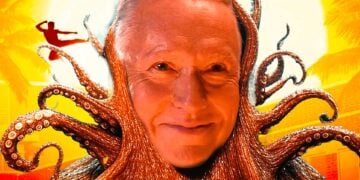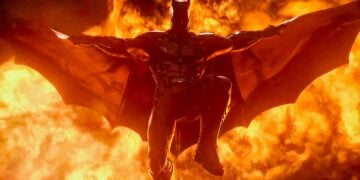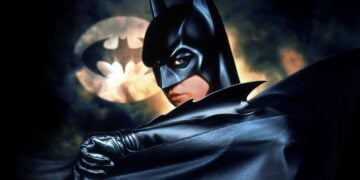Bryan Singer and Fox had a lot to live up to after the success that was X-Men: Days of Future Past, which still stands as the best X-Men team-up movie to this day (as far as X-Men movies in general go, Deadpool takes that prize). Their answer to that movie’s success was this year’s X-Men: Apocalypse.
X-pectations
I think Singer and co knew that it was going to be difficult to beat what X-Men: Days of Future Past had done. It had the benefit of combining the First Class reboot/prequel cast with the cast of the original trilogy, who made their last appearance in the franchise eight years prior in 2006’s The Last Stand. It also had their franchise darling, Wolverine, front and centre. It had great word of mouth, everyone was, and still is, raving about Quicksilver’s “Time in a Bottle” sequence, it was personal, well-acted and most importantly, it was thoroughly enjoyable.
So it comes as no surprise that X-Men: Apocalypse is facing an uphill battle with critics, who are branding it as the “worst X-Men movie since X-Men Origins: Wolverine”. As Jean Grey says to Scott, Jubilee and Nightcrawler as they exit the theatre after having viewed Return of the Jedi, “At least we know the third movie is always the worst.” This is basically Singer saying: “If this isn’t Empire Strikes Back, at least we tried.” It is also a cute nod to their very own mishap with The Last Stand.
I usually have low expectations for superhero movies when the reviews aren’t as great as I would have wanted them to be. It prepares me for the worst and lessens the heartbreak by a mile, although not even a 0% score could have prepared me for last year’s Fantastic Four reboot. X-Men: Apocalypse’s Rotten score stood at 52% at my time of viewing, so my X-pectations (eh) were rather low going in. The problem is that when I left the theatre after Fantastic Four or Batman v Superman: Dawn of Justice, I quietly accepted that the review score was accurate, went home and cried myself to sleep. Leaving the theatre after having viewed X-Men: Apocalypse, however, I couldn’t have been more surprised by how pleasantly good it was. It’s not Days of Future Past great, but definitely not The Last Stand bad.
So why is X-Men: Apocalypse having such a difficult time with the critics? The answer is simple: Nitpicking.
It is true that it could have been better and more linear and focused like its predecessor, but just because it isn’t, doesn’t make it a bad movie. It is true that there are flawed plot elements, wasted opportunities, and some shallow characterisations, but there is also greatness and hope (I’m trying out my Xavier persona). For a franchise that’s so deep into sequels, this trilogy-closer could have been far worse. I did not read any negative reviews prior to writing this article because I really wanted to break this down in an unbiased, deeply personal way. I love the X-Men franchise and I only have high hopes for it, but, for the purpose of this article, I have to break out my inner critic.
Below is my list of everything I had a problem with in the movie and why it can and should be forgiven for the sake of upping X-Men: Apocalypse’s Rotten Tomatoes score.
Magneto’s Arc in X-Men: Apocalypse
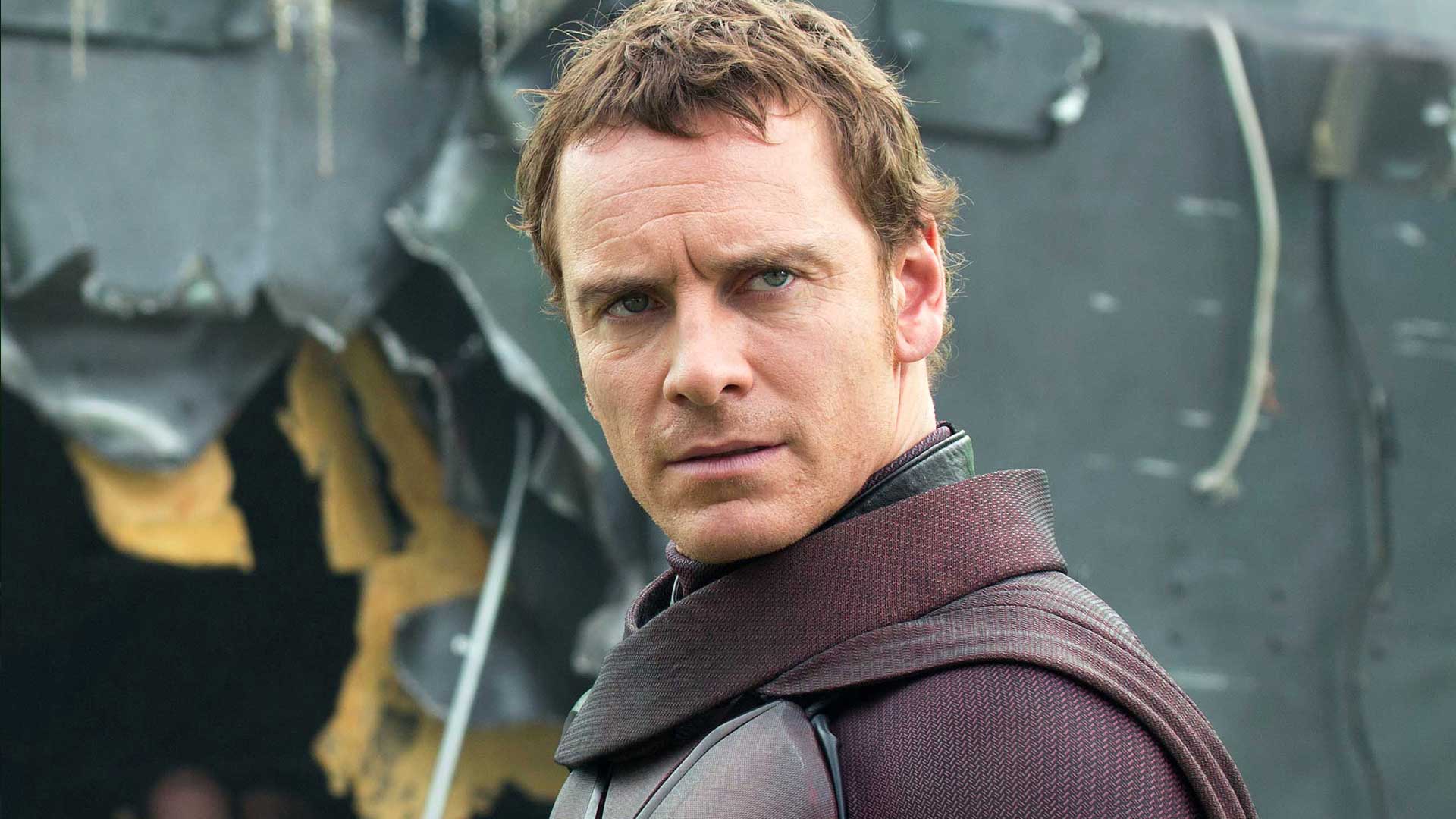
The nitpick: Magneto has had a deeply emotional arc in these movies. The very start of the trilogy showcases his time as a child in Auschwitz, forced to watch his mother being killed to unlock his mutant powers and then experimented on. Throughout First Class, he was portrayed as a broken individual who had had terrible things done to him. He steps into his villain shoes more in DOFP, but even then, his character has a clear driving force. He seeks to avenge his fallen brothers and sister mutants.
Say what you want about Magneto, but he has always been more of a tragic villain than a straight-up “kill everyone” villain. It is for this reason that I felt it was unnecessary to add even more tragedy to the character. In the movie, we see Magneto lose his wife and daughter (!) after revealing his mutant powers to save a coworker. The town’s local police descend upon his house, and his wife and daughter are killed in the crossfire. Magneto has had a wonderful arc, and it would have been nice to see him happy for a change, but the movie needed to give him a push back into his villainous ways in order for his allegiance to Apocalypse to make sense.
After this, he becomes somewhat of a henchman for Apocalypse. A villain who was once a tragic individual with an innate driving force is turned into a disciple who takes orders from a mutant who wants to kill not only humans but mutants as well. Protecting mutants was his thing in all of the previous movies, so it kind of took the punch out of what made the character relatable. I felt sorry for him in the first two movies and didn’t need to feel even sorrier for him in this one.
Why it’s okay: Michael Fassbender.
Except for Jennifer Lawrence as Mystique, the castings in these movies have been perfect, and Fassbender as Magneto is no exception. He portrays Magneto as a hero and a villain at the same time. His portrayal is heavy with pain and guilt. There is always a sense of sadness and tyranny in his voice, and he showcases the different layers of Magneto in every scene he is in.
In X-Men: Apocalypse, he delivers that performance and then some. The scene where he holds his wife and daughter after their deaths is one of the most heartbreaking, gut-punching scenes in any superhero movie ever. Also, the same thing has happened to Magneto in the comics. He’s lost his family, which leads him to go on the usual revenge spree. So the movie should get points for drawing inspiration from the comics. Most importantly, as much as I want Magneto to be a hero, he is a villain first and foremost and seeing him come so close to causing global Galactus-sized destruction does give me the geek-tingles. Even though he becomes a mindless follower of Apocalypse, he still has a depth to him that sets him apart from the other Horseman and he showcases his megalomaniacal personality in full.
It is important to remember that although X-Men: Apocalypse is the last film in the trilogy, these characters will continue into the next trilogy so we are not done with Fassbender’s Magneto yet. I am excited to see where the character goes after this and whether Xavier and Magneto’s relationship will end up as it has in DOFP, where they agree that all their bickering was a complete waste of time.
No Wolverine in X-Men: Apocalypse
The nitpick: I was okay with the movie giving the other X-Men a chance to shine and giving the audiences a chance to come to terms with the fact that Hugh Jackman’s time as our favourite mutant is almost up by having an almost Wolverine-less plot.
Wolverine has been featured prominently in every X-Men movie thus far (except for First Class), and I wasn’t sure what the result would be without the charm, intensity and humour that Hugh Jackman always brings to these movies. What I wasn’t okay with was that the marketing and trailers made it look like they wanted to make Mystique the new Wolverine. Jennifer Lawrence’s shapeshifter has been featured front and centre in almost all the trailers and banners. Mystique makes a much better villain, an okay X-Men, but she would be horrible in the leadership role. I’m not saying she’s a bad leader, I’m just saying that she doesn’t belong in Wolverine’s shoes from a comic-accurate point of view.
Why it’s okay: Weapon X!
Wolverine has a small cameo in the movie, and it is absolutely glorious. It features him in his Weapon X garb and full berserker rage mode. His scene in this movie is maybe the best Wolverine action sequence ever put to film, and it delivers a better origin story than the entire X-Men Origins: Wolverine. His absence throughout the rest of the movie was hardly noticeable. The new cast held their own perfectly without him, thanks to the great acting talent and a fast-moving plot. As far as Mystique goes, I was surprised by how little she actually featured in the movie. She is given a semi-leadership position, but only towards the end of the film, and her arc that brings her to this position feels natural, where it could have felt forced. She is not given the spotlight as I had previously thought. Instead, every X-Men is given equal time to showcase their strengths, leadership, and Wolverine-isms. Even Cyclops, who has been a rather dull presence in the previous films, is given more to do here than Mystique.
Apocalypse
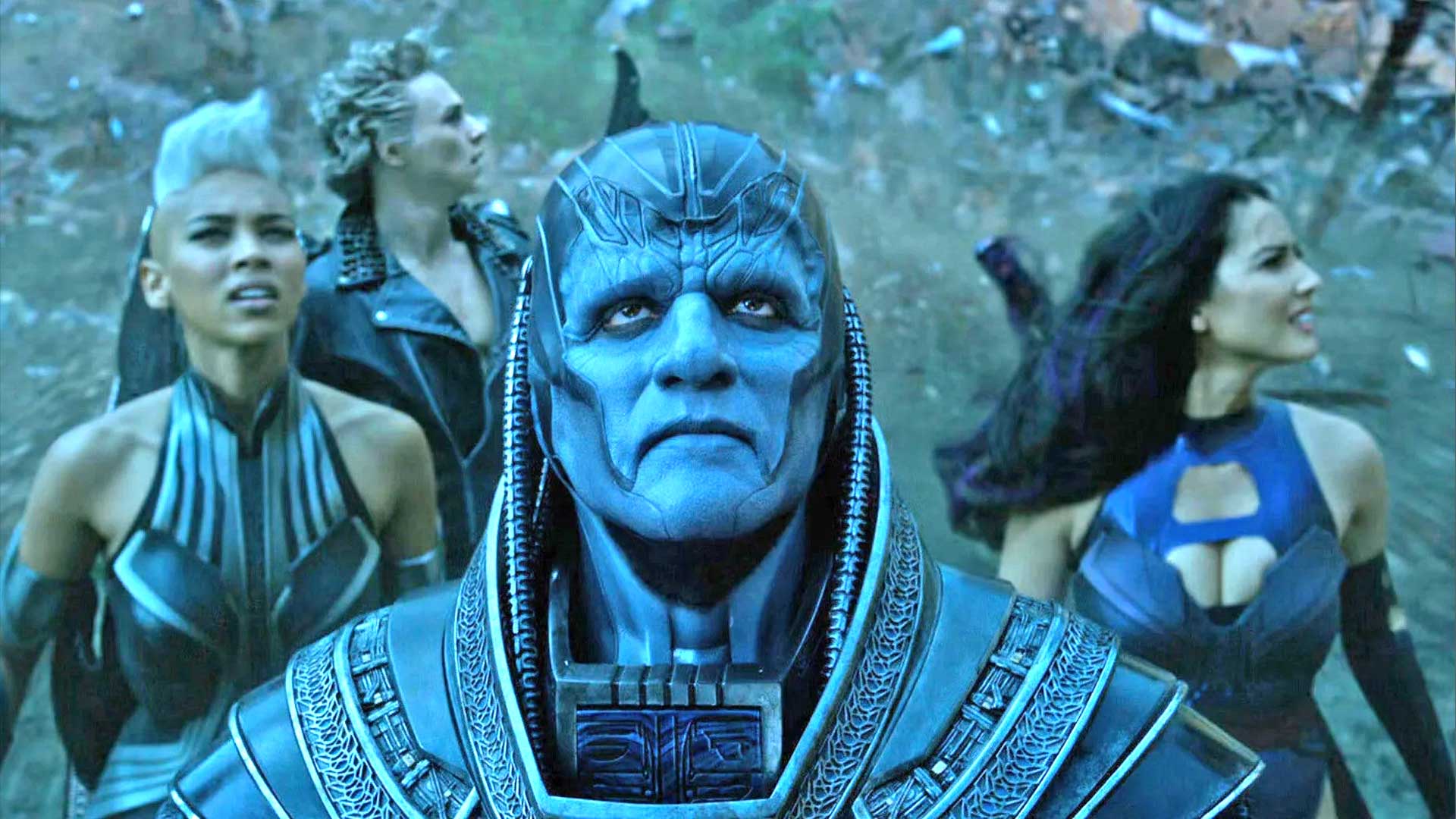
The nitpick: Most critics agree that Apocalypse has been somewhat of a letdown in comparison to previous X-Men villains such as Magneto and William Stryker.
With them, the fight has always been a personal one, and Apocalypse just kind of removes the weight of the conflict between these characters. Most people also agree that his master plan is rather cliché at this point. We have seen the whole “it’s time to reformat and reboot the Earth” plan multiple times before at this point, and Apocalypse doesn’t add anything new to it. Also, most of his screen time is spent finding and selecting his Horseman and supplying them with new outfits, because you know, those Horsemen need to look bitching. There is also a number of plot holes in his eventual attempt to destroy humanity, like why he didn’t just do it himself instead of asking Magneto to do it or why he had to transfer his consciousness to Xavier at the exact same time as when Magneto begins the destruction process. Couldn’t he have done it earlier?
Why it’s okay: It really isn’t the movie’s fault for feeling clichéd at this point.
One fantastic article I read pointed out that X-Men: Apocalypse came out 10 years too late. Back then, audiences weren’t used to movies being able to showcase world-ending catastrophes with reliable CGI. Filmmakers were forced to keep the climax of a superhero movie grounded because of the technological limits of the time. Since The Avengers came out in 2012, there has been no limit to what can be accomplished in these films, and Apocalypse is no exception. Seeing Apocalypse bring the, ahem, Apocalypse, is truly mesmerising if you ignore the fact that we’ve seen it countless times before. I would also be remiss not to mention what Oscar Isaac brings to the table as the titular villain.
There have been too many complaints about Apocalypse’s look, size, colour, and voice. Basically, fanboys are always going to be fans. While I would have enjoyed a more comic-book-accurate Apocalypse, Oscar Isaac brings a certain menace to the character that sets him apart from his comic-book counterpart. He doesn’t need size or brute strength to be a force to be reckoned with. His voice is also different in the film than what we have heard in the trailers. He finishes his sentences with a demonic shout, adequately sending shivers throughout the theatre and rendering anyone opposing him wishing they wore their brown pants. He holds his own against the likes of James McAvoy’s Xavier and Jennifer Lawrence’s Mystique, who have had three movies to really grow into their roles.
There is always a sense of foreboding in his eyes, and even after his twelfth tyrannical speech, he still manages to add something extra every time, which effectively makes him feel less repetitive and more sinister. It is also refreshing to see a big bad that is practical for a change, as opposed to all CGI, such as Ultron or Doomsday.
Blunt Secondary Characters
The Nitpick: Franchise veterans such as Beast, Cyclops, Jean, Nightcrawler and Quicksilver all get their time to shine in X-Men: Apocalypse. Newly introduced characters such as Psylocke, Archangel, Jubilee and even Storm, however, are given far less to do here and basically serve as marketing material and representations of what’s to come in further instalments.
Psylocke is rather one-note and literally just walks out of the story without further mention. Archangel only serves as a foil for Beast in the big climactic battle, and Storm, while far more interesting than Halle Berry’s take on the character, leaves audiences wanting more out of the character. The four horsemen have been featured strongly in the promotional material, but they do not feature as strongly as the posters would have led audiences to believe.
Why it’s okay: X-Men: Apocalypse has a huge arsenal of characters.
It is nearly impossible to give everyone enough screen time without having to sacrifice a few lines of dialogue and key origin sequences, such as how Storm suddenly has a change of heart or what drives Psylocke to turn to villainy the way she does. The movie also does a far better job than previous X-Men films of showcasing the various characters and their abilities. We all remember Ben Foster’s Angel from The Last Stand, who was also heavily featured in all the promotional material and even wearing his X-Man uniform, but spends about 2 minutes in the movie, literally flying in and out of a scene.
Even though not all the characters get their due this time around, they do leave the audience excited to see more of them. The youthfulness and colourfulness of Storm, Angel and Psylocke add vibrancy to the screen, and they deserve to be accepted by audiences for being the visual pleasures which they are.
The Costumes in X-Men: Apocalypse
The Nitpick: I have always had a problem with the X-Men uniforms in these movies.
They are rarely comic book accurate, and while that can be forgiven, there is no excuse for removing the colourfulness that sets the X-Men apart from other heroes and injecting them with an all-black façade. It also didn’t make sense why Mystique would don an armoured outfit, seeing as that would render her shape-shifting powers useless.
Why it’s okay: The X-Men actually get their comic-book-accurate outfits at the end of X-Men: Apocalypse.
Cyclops has his trademark yellow lining on his suit and a visor that doesn’t look like a prop from the Robocop set. Nightcrawler is blessed with his classic red triangular-shaped torso piece, and Mystique is supplied with her trademark white top. The black armoured suits actually make sense plot-wise and are only really featured during the climax battle. What is even better is that the villains showcase their colourful costumes throughout the movie. Psylocke could have easily stepped right out of a page of the comic book, and Quicksilver, although in pedestrian clothes for much of the movie, rocks the ’80s look with his now trademark silver leather jacket and a Rush T-shirt. As far as visuals go, throw in the Weapon X outfit for Wolverine, a bald Xavier and Jean’s Phoenix powers, and you have the most comic book accurate X-Men movie thus far.
Out of time
The Nitpick: X-Men: First Class and Days of Future Past have done a wonderful job of incorporating the timely events of the decade in which they play out into their plots.
First Class dealt with the Cuban Missile Crisis, while DOFP incorporated the Kennedy Assassination and then-President Richard Nixon into its plot. It also featured other elements that set the 60s and 70s apart. In First Class, the technology genuinely feels dated. The outfits are groovy, and the dialogue is full of phrases that could have only been heard during the sixties.
In DOFP, there is A LOT of button pushing, dial turning and the seventies equivalent of online hacking, frequency meddling. It features dated cars, television spots and the truly effective cuts to 8mm footage during scenes where the press is present.
X-Men: Apocalypse features none of those. Much of the scenes are spent isolated from the real world, so we only get to see the Xavier mansion filled with students wearing eighties garb and the various set pieces that are either indoors, in cities not bothered by popular culture or CGI wastelands. There is also no incorporation of real-world issues as in the previous films. The technology has advanced significantly since the last X-Men film. The X-Men’s Jet now looks the same as it did in the original X-Men film, Cerebro looks more advanced than ever before, and the suits look like they could have been 3d printed. Unlike the previous two films, this one could have been set in any decade, and no one would have noticed.
Why it’s okay: One word: Eurythmics.
As soon as Quicksilver’s Nikes appear in the frame and he calmly continues to adjust his Walkman headphones while “Sweet Dreams (Are Made of This)” by the Eurythmics is playing, I forgave the film for everything else. It is the best song to accompany the sequence (more on that later) and also thrusts eighties nostalgia down your throat. Even though the real-world events of the eighties aren’t featured, or they didn’t make use of other visual cues to let the audience know that the film takes place in the decade of innocence lost, there are still tidbits that remind you that these characters are about 50 years old by now.
Elements such as Jubilee’s costume, the props in Quicksilver’s mom’s basement, having the students go to the screening of Return of the Jedi, the music and lack of all things the internet and mobile devices does give the movie a dated feel that should evoke even the smallest bit of nostalgia in anyone old enough to remember the Rock of Ages.
The Plot
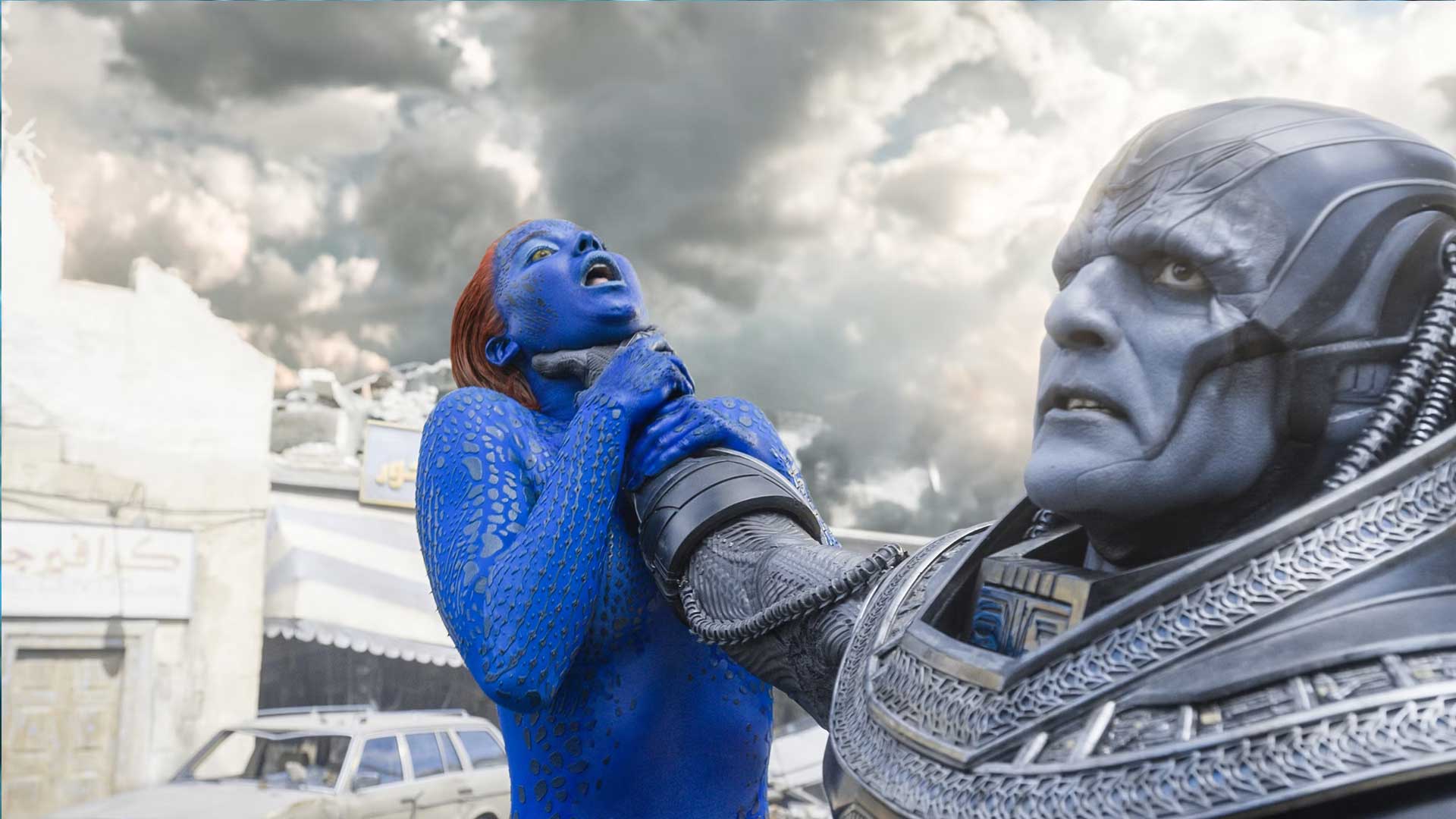
The Nitpick: Now this one wasn’t a big problem for me, personally.
I just felt that I needed to include it as this is the one that all the critics are going after. The general consensus is that the plot is less linear than its predecessor and that it is uneven in tone. As I said before, it was always going to be an uphill battle against the greatness that was Days of Future Past. But you need to ask yourself the question: was there really any other way to do it? This movie does some major fan service. It introduces beloved characters, includes awesome cameos, sets up future plotlines which everyone wants to see and has the impossible mission of setting up the biggest villain in the entire X-Men universe while progressing the personal stories of Xavier, Magneto and all the other X-Men who get their new start in this movie.
It’s a rare feat to balance so many things at once, and the only other films to do it entirely effectively are The Avengers and Captain America: Civil War. It is necessary for a plot that focuses on global consequences to avoid jumping around. I never felt strained or struggled to invest in the plot, which is more than can be said for Batman v Superman. I could follow the story with ease, and I was invested in every scene.
Another complaint about the film is its uneven tone. The biggest apparent flaw here is the Quicksilver scene that presumably comes out of nowhere. It is preceded by a very emotional set-piece and is followed by an extremely emotional second act. Here is the thing: Leave Quicksilver’s scenes alone! It could have been placed between two scenes depicting the Third Reich and an ISIS video, and I couldn’t have cared less.
The “Time in a Bottle” sequence from DOFP is the best X-Men-related scene of the decade, and this one only improves everything that made the first one great. If it was inserted just for the sake of fan service, you may consider me serviced. The ‘Sweet Dreams” sequence did not remove the emotional punch that preceded it. It only gave it some much-needed levity, and we can all just be grateful that it exists.
That’s about it. There is really no lack of things that make X-Men: Apocalypse good. Its review score currently stands at 49% over at Rotten Tomatoes. X-Men Origins: Wolverine currently sits on 38%, The Last Stand on 58%, 2013’s The Wolverine on 70% and Days of Future Past takes the top spot with a tremendous 91%. So saying that X-Men: Apocalypse is the worst X-Men film since The Last Stand couldn’t be further from the truth.
The RT score proves that Origins is far worse and I will personally never understand how The Wolverine managed 70% as it is by far the most forgettable X-Men movie ever released. Days of Future Past’s 91% ranks higher than even the best of superhero movies.
Now I’m not saying that an RT score demonstrates the quality of a movie accurately. There have been many occasions where I couldn’t have disagreed more with an RT score. It also does not mean that DOFP is the best superhero movie ever. It merely states whether critics found more things wrong with a film or more things right. If X-Men: Apocalypse lands on 49%, it would mean that it is 1% more than The Last Stand.
Two things: There is no way that this film is as bad as The Last Stand, and there is no way that it is 49% good and 51% bad. I get it that this is all just my opinion, but it has never been clearer that a film is suffering from bad reviews solely based on the fact that it was unfortunate enough to compete against a very strong predecessor and against a time in which there is no lack of other great superhero films. The one thing that X-Men: Apocalypse has in common with DOFP is also the most important: It is thoroughly enjoyable. No one ever says Return of the Jedi is the worst of the original trilogy. They merely say that Empire Strikes Back is the best. That should not and will not affect how people feel about Return of the Jedi. Let’s keep that in mind when discussing this film in 20 years.
X-Men: Apocalypse isn’t the worst film in the new trilogy. Days of Future Past is merely the best. And that’s okay.
RELATED: X-Men ’97 Review – An Explosive Continuation of the Children of the Atom
X-Men: Apocalypse – Movie Review
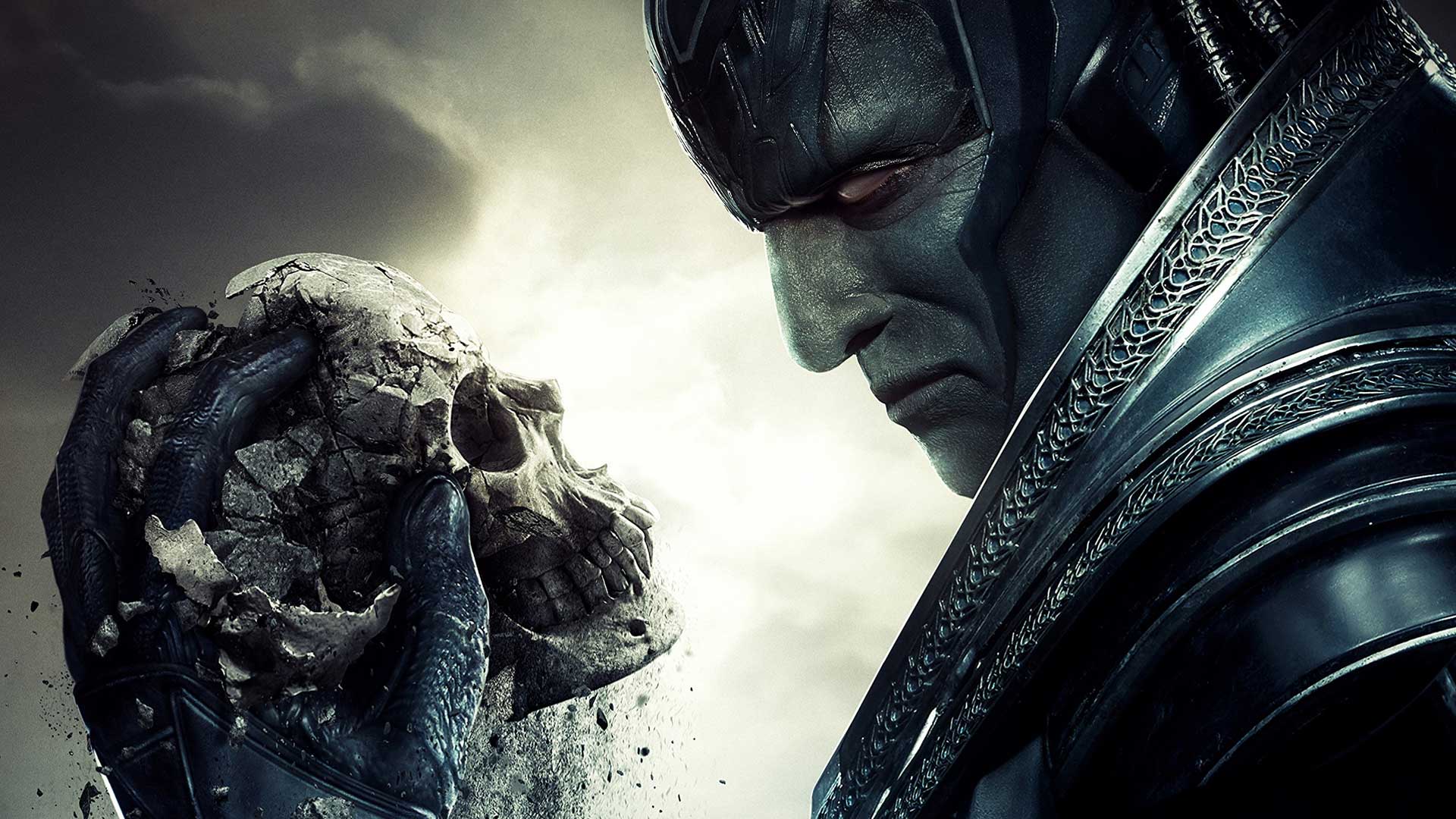
Starting on a negative note is such a no-no, but I feel the need to get X-Men: Apocalypse’s irritating anomalies out of the way. How these newer movies are supposed to fit into the overall X-Men canon is becoming more and more obscure as plotlines get twisted and character developments rewritten.
In Deadpool, the character’s willingness to break the fourth wall is a clever method of addressing plot incongruences, and in X-Men: Apocalypse, this is done to an extent through the use of Easter eggs and inside jokes. However, it does take a concerted effort to, as Elsa would say, let it go.
It is a mark of fans’ devotion to the franchise that they are willing to do just that – at least that is the conclusion I can draw based on the continued success of the franchise and the cheers elicited from the audience as X-Men: Apocalypse’s end credits rolled.
Attending the launch of Ster-Kinekor’s seventh IMAX cinema, at the newly-opened Mall of Africa in Midrand, I entered the film on a high from sugary cocktails and colourful candy. I exited with a feeling of exhilaration, having been taken on a visual vortex of epic proportions – from the opening sequence all the way through to the final battle that is the film’s obligatory climax.
Due to stories of sardine-like crowds and stolen cars, a lot of people, including me, have been avoiding the Mall of Africa like the plague. It’s not as bad as everyone makes it seem, and watching X-Men: Apocalypse on IMAX 3-D is worth it, although it is a serious assault on your auditory faculties.
Brought to you in all the splendour of 21st-century digital innovation is a story set 10 years after X-Men: Days of Future Past, i.e. 1983. Attention to detail in costume and art direction brings the ‘80s to life, but my favourite incarnation of the fashionably dubious decade is in the portrayal of its “bad” mutants. The shots of Professor Xavier’s school and his students look like ‘80s period pieces, but when it comes to the darker and more troubled mutants – the movie’s so-called villains – they look like something out of a kitsch ‘80s fantasy film. Whether this was the intention is debatable, but it’s effective and serves to visually juxtapose the two sides of the mutant argument.
My hesitancy to use the term villains stems from the fact that the mutants who sway towards the dark side don’t act or feel the way they do because they’re simply evil or superficially bent on destruction. Troubled pasts and conflicting emotions may lead the wrong way, but can be overcome, which is something these films have always sought to address, particularly through Magneto, Mystique, and Wolverine.
Even En Sabah Nur – this instalment’s big bad – has an ambiguous fibre in his centuries-old being. In a scene which echoes Leeloo’s horror at what humanity has done to the world, in The Fifth Element, it is difficult to disagree with En Sabah Nur’s disdain, and his disapproval of the systems that constrict us, and our potential, as a race. Oscar Isaac, one of the most exciting actors emerging into Hollywood’s spotlight, portrays En Sabah Nur, marking Isaac’s second major debut in a massive movie franchise.
Speaking of massive franchises, Game of Thrones’ Sophie Turner steps into Famke Janssen’s shoes to portray a younger version of Jean Grey. In doing so, she mirrors fellow Thrones star Emilia Clarke, who took over the role of Sarah Connor last year. It’s great to see these young actresses start their careers deviating from the norm of being lobbed with mediocre roles in formulaic “chick flicks”.
The character of Mystique, however, has been somewhat overridden by Jennifer Lawrence’s star power. For someone who is “mutant and proud”, she sure spends a lot of time as a pretty blonde. The story kind of excuses this by Mystique disguising herself due to her unwillingness to be labelled a hero. She is also the most wildly divergent from the older version of the character. This is annoying in its continuity anomaly, but empowering, in that she has become more than just a cog of Magneto’s rage.
But if this were all about character, I would just walk out and re-watch Christopher Nolan’s Batman trilogy. Bruce Wayne, and Christian Bale’s interpretation of the character, is my favourite to watch, but thematically, first prize goes to X-Men. Each film carries with it Professor Xavier’s optimism of a better humanity, and our ability to choose the right path.
X-Men: Apocalypse could just as easily be about our own probable apocalypse. Through politics, prejudice, and military mismanagement, the film implicitly addresses nuclear disarmament, refugee crises and the disenfranchisement of the powerless.
The pomp and grandeur of the visual effects veil these themes, while muffling the characters, but they are there nevertheless. Along with trademark humour to lift the mood and remind us why we love the characters, X-Men: Apocalypse is a stumbling but welcome continuation of this part of the Marvel universe.
RELATED: The 15 Most Powerful & Strongest X-Men Characters, Ranked


